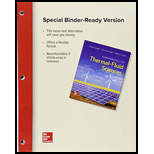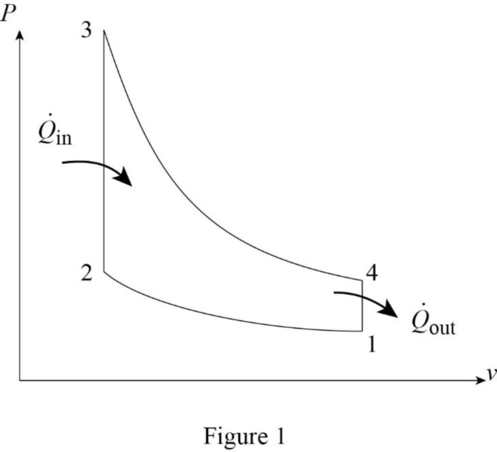
a)
The maximum temperature and pressure during the cycle.
a)
Explanation of Solution
Calculation:
Draw the

Calculate the clearance volume of one cylinder.
Calculate the volume at state 1.
Calculate the mass of the air.
The properties at during process 1-2 are as follows:
During process 2-3:
Thus, the maximum temperature and pressure during the cycle are
b)
The net work per cycle per cylinder and the thermal efficiency of the cycle.
b)
Explanation of Solution
Calculation:
During process 3-4:
During process 4-1:
Calculate the net power output
Thus, the net power output is
Calculate the thermal efficiency of the cycle
Thus, the thermal efficiency is
c)
The mean effective pressure of the cycle.
c)
Explanation of Solution
Calculation:
Calculate the mean effective pressure for an ideal Otto cycle
Thus, the mean effective pressure of the cycle is
d)
The power output for an engine speed of 3000 rpm.
d)
Explanation of Solution
Calculation:
Calculate the power produced by the engine
Thus, the power output for an engine speed of 3000 rpm is
Want to see more full solutions like this?
Chapter 9 Solutions
Loose Leaf For Fundamentals Of Thermal-fluid Sciences Format: Looseleaf
 Elements Of ElectromagneticsMechanical EngineeringISBN:9780190698614Author:Sadiku, Matthew N. O.Publisher:Oxford University Press
Elements Of ElectromagneticsMechanical EngineeringISBN:9780190698614Author:Sadiku, Matthew N. O.Publisher:Oxford University Press Mechanics of Materials (10th Edition)Mechanical EngineeringISBN:9780134319650Author:Russell C. HibbelerPublisher:PEARSON
Mechanics of Materials (10th Edition)Mechanical EngineeringISBN:9780134319650Author:Russell C. HibbelerPublisher:PEARSON Thermodynamics: An Engineering ApproachMechanical EngineeringISBN:9781259822674Author:Yunus A. Cengel Dr., Michael A. BolesPublisher:McGraw-Hill Education
Thermodynamics: An Engineering ApproachMechanical EngineeringISBN:9781259822674Author:Yunus A. Cengel Dr., Michael A. BolesPublisher:McGraw-Hill Education Control Systems EngineeringMechanical EngineeringISBN:9781118170519Author:Norman S. NisePublisher:WILEY
Control Systems EngineeringMechanical EngineeringISBN:9781118170519Author:Norman S. NisePublisher:WILEY Mechanics of Materials (MindTap Course List)Mechanical EngineeringISBN:9781337093347Author:Barry J. Goodno, James M. GerePublisher:Cengage Learning
Mechanics of Materials (MindTap Course List)Mechanical EngineeringISBN:9781337093347Author:Barry J. Goodno, James M. GerePublisher:Cengage Learning Engineering Mechanics: StaticsMechanical EngineeringISBN:9781118807330Author:James L. Meriam, L. G. Kraige, J. N. BoltonPublisher:WILEY
Engineering Mechanics: StaticsMechanical EngineeringISBN:9781118807330Author:James L. Meriam, L. G. Kraige, J. N. BoltonPublisher:WILEY





